After yesterday’s post on CO₂ monitoring, I’ve been happily surprised at how many people expressed interest. Here’s more on that, and a few updates. Vaccines are rolling out as a new danger arrives; it’s more important than ever to be careful and think clearly.
CO₂ levels at my Y
My YMCA has been a big part of my weight loss and diet improvement in recent years, so I’m eager to get back there when it’s safe. Today I took my monitor to two locations – the closer satellite branch that opened more recently (left), and the main branch. QUITE a difference!
Supposedly both sites’ ventilation systems are connected to outdoor air, but I’m guessing the satellite location doesn’t get turned on enough. I’ll be reaching out to them!
My monitor and why I chose it
The following is not an endorsement; it’s just the answer to “which one did you get?” It’s this one, $130 on Amazon. I did not do thorough research – I bought a couple, decided I liked one, returned the cheap junk one. You can search for CO₂ monitors and pick what you like.
Features to consider:
- For me, portability and battery are important.
- For some situations, e.g. Mom’s house, I might prefer a larger display, with plug-in, to avoid charging or changing batteries.
- If I were shopping for another battery operated one, and if I cared about precision, I might dig into how rapidly a model is ready to give an accurate reading after power-up. Some like to be left outdoors for a while when powered on, to calibrate to what clean air is, locally.
Osterholm’s podcast
I’ve just learned (from the wonderful Ted Eytan MD) about this podcast from the University of Minnesota’s CIDRAP (Center for Infection Disease something), particularly their director Mike Osterholm. As retired family doc friend Peter Elias says, “I’ve been listening to his Wednesday Covid podcast essentially from the beginning… In addition to his competence, he is both a superb communicator and a real human being.” So far I’ve listened to his four most recent episodes.
It’s The Osterholm Update on the CIDRAP site, or on any other podcast app you use. The next episode is this Weds, Feb 17. In last week’s he cited a philosophy that may seem familiar to readers of this blog: what viewpoint might actually make any difference –
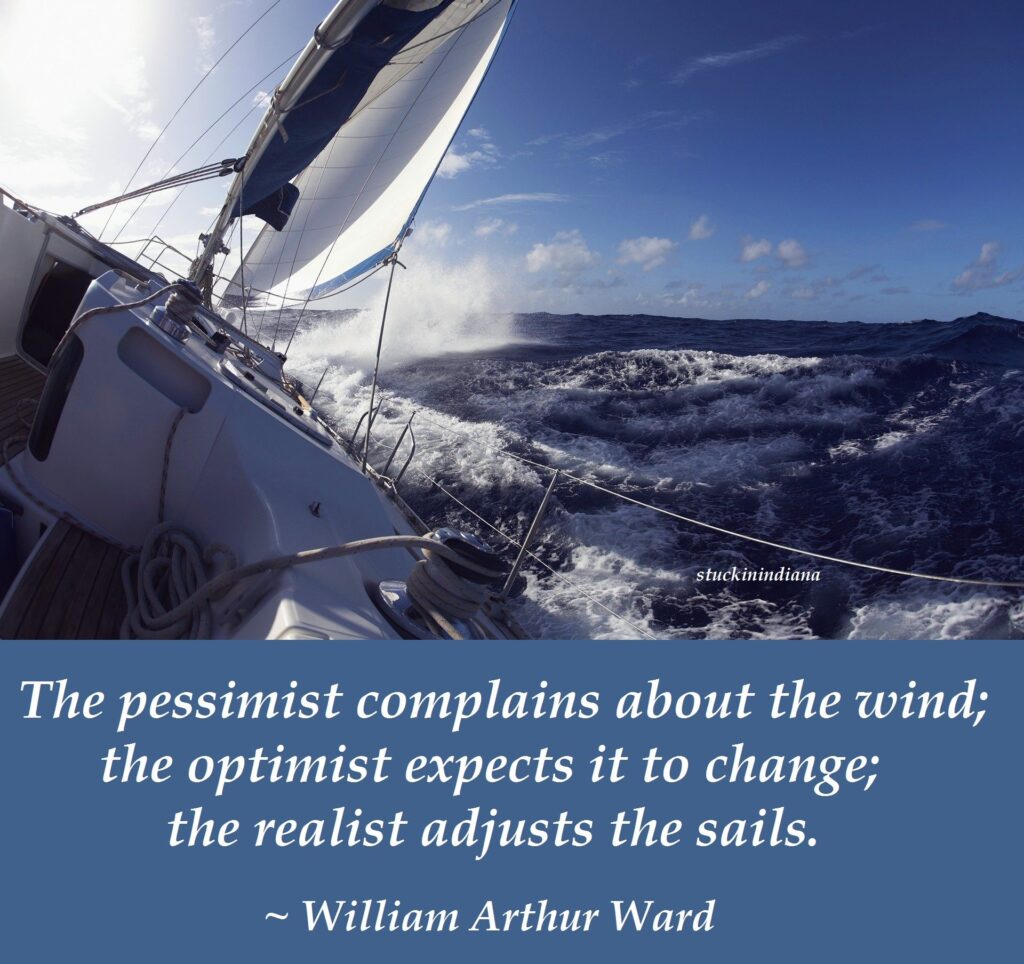
Adjusting your sails is a relevant metaphor when the winds change, which may be upon us, because …
Beware the coming B117 surge
Osterholm says he gets lots of unhappy email from people who say he’s too cautious or too careless in his thoughts about (for instance) re-openings. As I’ve said for months, time will tell, but people I trust say Osterholm’s advice generally pans out.
He is worried that media people keep calling and saying, “Look, Mike – the numbers are down! Isn’t that great?”
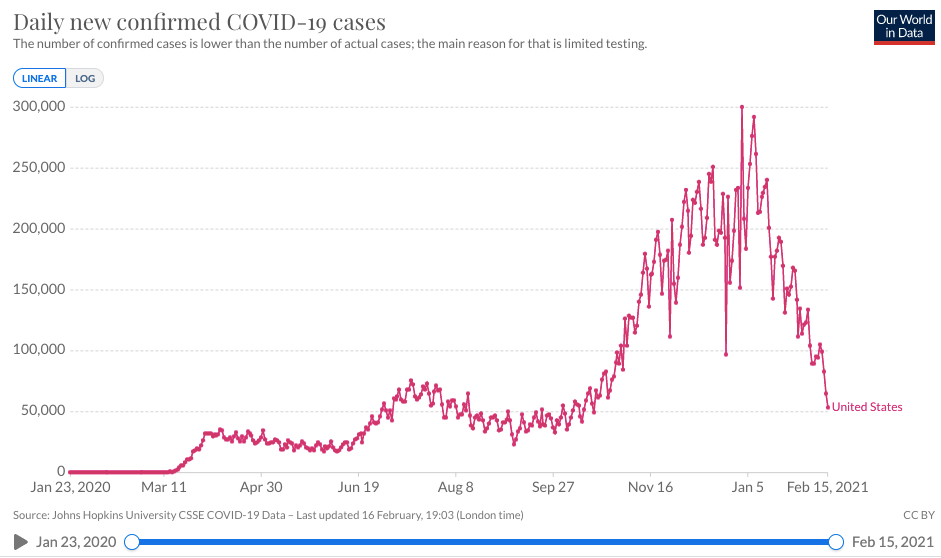
It is great, for the moment. But epidemiologists are in the business of predicting, not celebrating what just happened, and he’s deathly afraid that because our current infection rates are down, we’re about to walk into a buzzsaw by getting careless again – and it will again crush our hospitals and their workers, in addition to killing patients.
He likens his job to sitting on a lovely tropical beach in gorgeous weather and trying to convince people to evacuate because a Category 5 hurricane is 450 miles away. He’s cited this history in two episodes:
- April: 32,000 cases/day. Yikes, 1000/hour! It CAN’T get worse.
- May: whew, flattened it to 20k/day. Glad THAT’s over.
- Mid July (10 weeks later): 70,000/day – twice the disastrous April level.
- September: whew, flattened it to 26,000/day again. We can re-open.
- Nov. 20 (ten weeks later): 200,000 cases in one day
- Dec. 3: whew, down to 160,000/day (5x April is “whew”??)
- Dec 29: 200,000, then 300,000 on Jan 2. (Some of that was catching up on past-due holiday paperwork.)
- Jan 24: whew, got it back down to 160,000. Glad THAT’s over.
Today it’s much better (50,000 new cases Feb 15) and everyone wants to open, understandably.
But there’s a new wild card: the B117 variant is more infectious (spreads more easily), which means the things you’ve been doing (masks and distance and handwashing) might no longer work, so you might infect yourself and others even if you’ve always been careful … not to mention what the careless people do.
Today through a Starbucks window I saw a maskless woman teaching a group of four people something, 4′ from their masked faces. Perfect setup for a more contagious variant. (And yes, B117 has already been found in New Hampshire.)
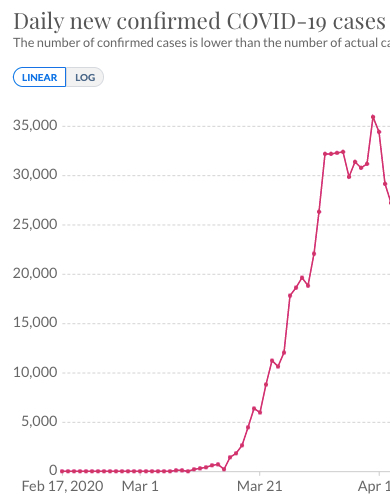
Right now the B117 variant is in the small exponential numbers, exactly the way the original virus was a year ago. In case you forget, this chart shows what that was like, this time last year.
His point is, imagine what that will be like if it happens on top of a baseline of 50,000 cases a day.
Make it through. Keep doing what works.
Like any competent scientist, Osterholm says he’s willing to be proven wrong and would be thrilled if it happens. But he says the next 4-12 weeks may be worse than anything we’ve seen yet, in body count and crushed hospitals; he thinks we should “adjust the sails” by giving first doses of vaccine to as many people as possible, instead of second doses, which would in total slow the spread.
Time will tell. In the interim, all you can influence is yourself. All of the above doesn’t change what works: be conscious and careful about the air you breathe, stay out of danger as much as you can, wash hands when you get home. B117 means it’s all more important than it was.
Osterholm thinks that with vaccines rolling out, these next few months might be COVID-19’s last hurrah. Time will tell. Make it through.
Footnote about the sailing image above:
Searching for this image, I was amazed at how many people published pretty photos of sailboats at sunset on placid seas. That ain’t what this is about, folks – it’s about dealing with forces you can’t control that are going to hit whether or not you’re ready.
I imagine that Osterholm, being from the Land of 10,000 Lakes (like me), has experienced rough weather while sailing. The quote is right – you get no credit for anything other than dealing with reality.


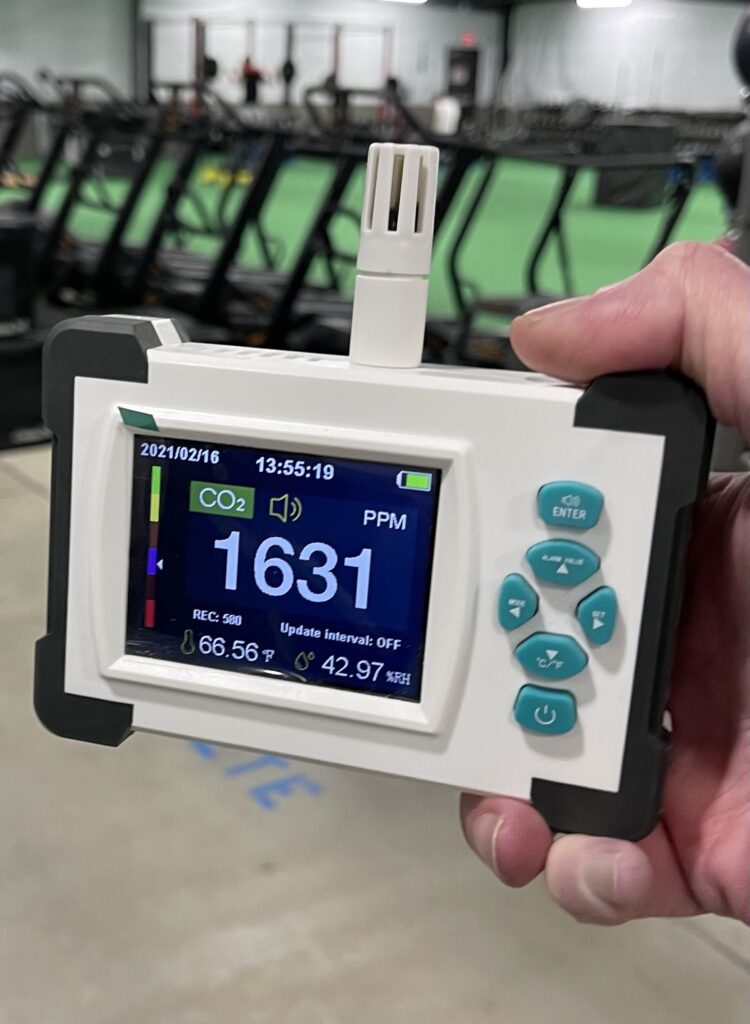
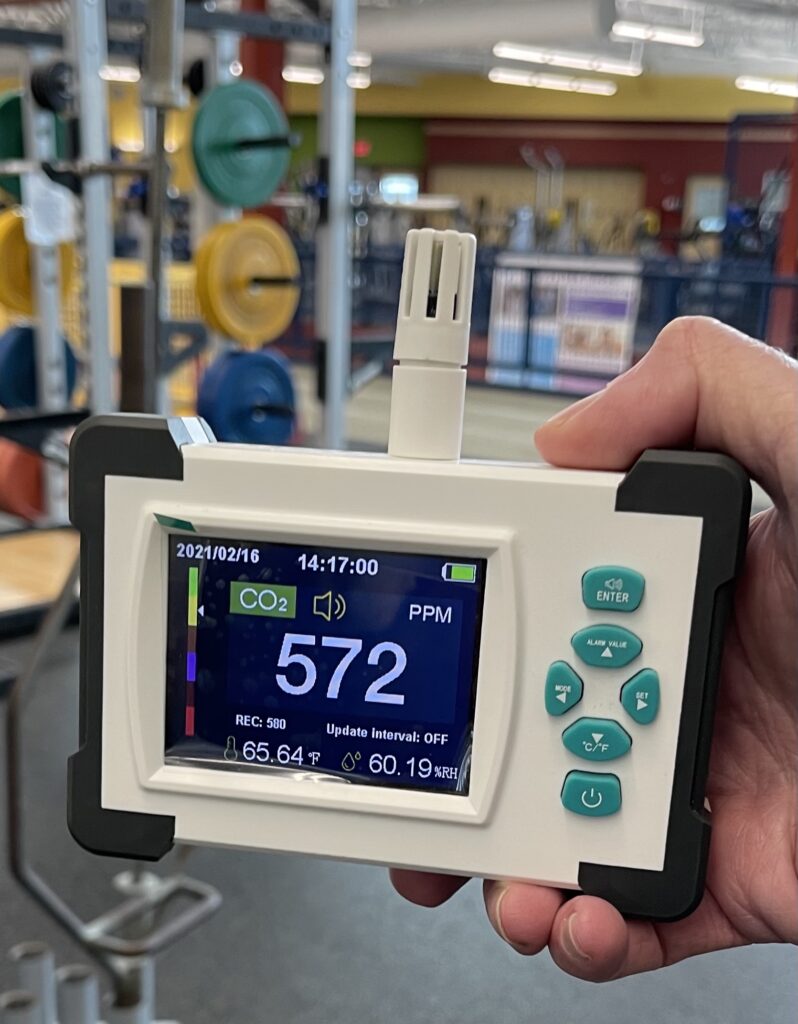
Thanks for sharing these updates, Dave. I’ve been tuned in, enjoying, and learning a lot from them. Especially the C02 monitor info recently. And I did not know you were also from Minnesota! Me too! I spent my first 40+ years there before work brought me to sunny San Diego, CA. I didn’t have to think about that decision for long! We’ve been here about three years now and I haven’t missed the snow (or mosquitos) even a little bit.
Thanks again! Stay safe!